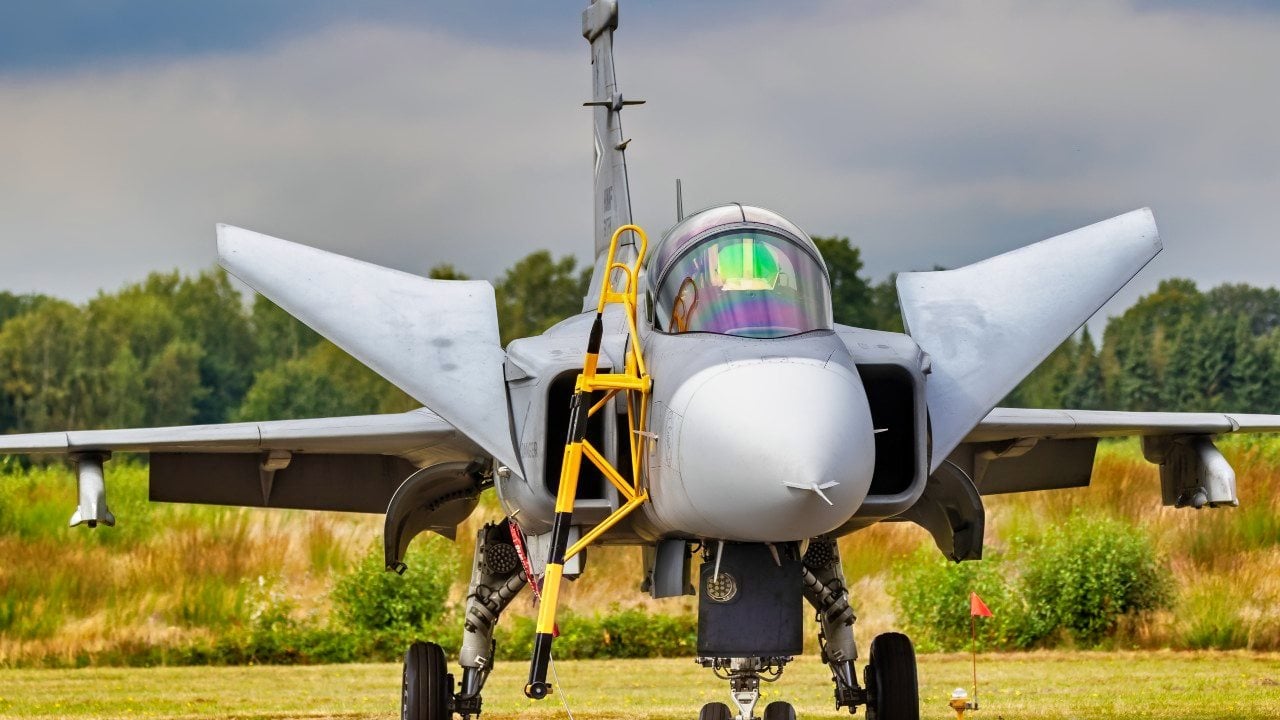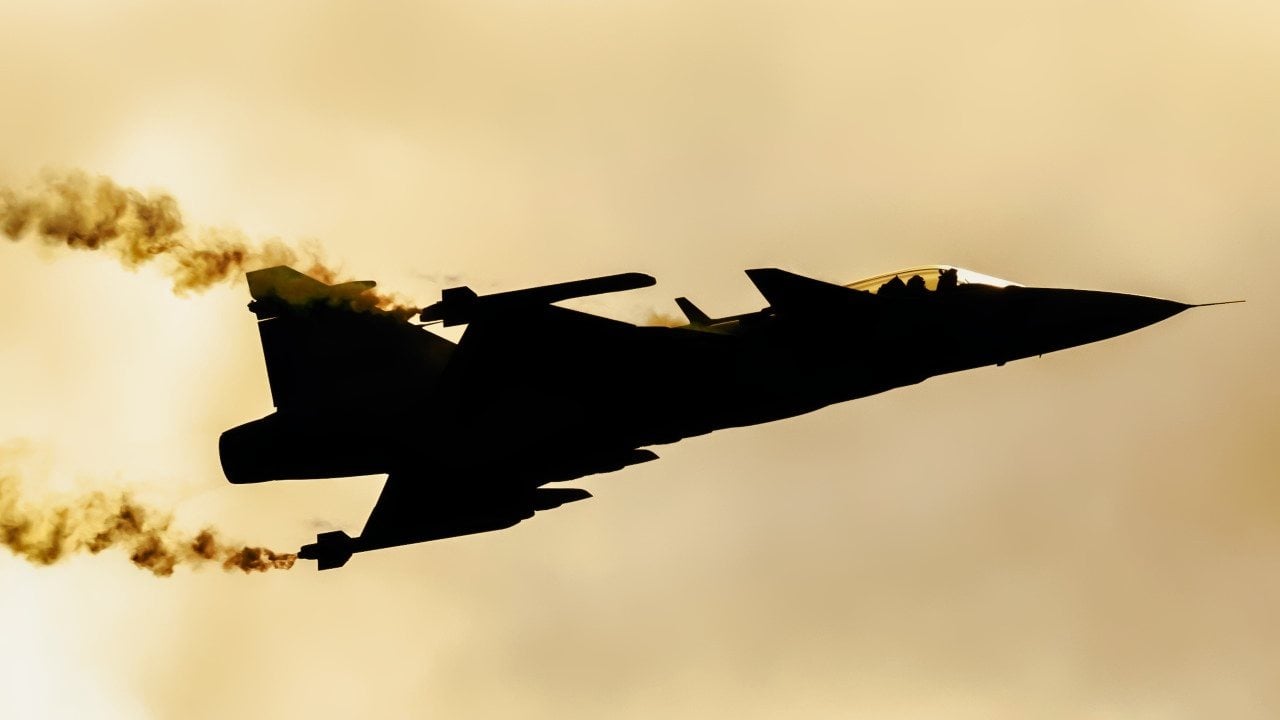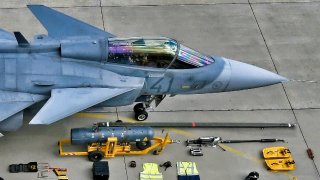New JAS 39 Gripen E Fighters Are Headed Right to China's Doorstep
The Royal Thai Air Force (RTAF) has selected the Saab JAS 39 Gripen E to replace its aging fleet of F-16A/B fighters, beating out Lockheed Martin's F-16 Fighting Falcon.
Summary and Key Points: The Royal Thai Air Force (RTAF) has selected the Saab JAS 39 Gripen E to replace its aging fleet of F-16A/B fighters, beating out Lockheed Martin's F-16 Fighting Falcon.

-The RTAF will receive 12 to 14 Gripen Es in batches over the coming years, contingent on government budget approvals.
-This decision follows Bangkok's previous acquisition of Gripens in 2007 and 2010. The Swedish-built fighter's suitability for Thailand's climate and operational needs played a key role in the selection.
-Meanwhile, the U.S. may still supply additional F-16s to Thailand through a proposed "loan" agreement, as Washington seeks closer ties with Bangkok.
JAS 39 Gripen E Fighters Headed Close China Thanks to Thailand
The Royal Thai Air Force (RTAF) announced that it has selected the Saab JAS 39 Gripen E for its new fighter squadron, beating out the Lockheed Martin-made F-16 Fighting Falcon. It could be seen as redemption of sorts for Saab, which lost out to the F-35 Lightning II with the Royal Canadian Air Force last year.
"The procurement is in process [but is] dependent on the government," a Saab spokesperson told Janes on Sunday while acknowledging that the program would progress following Thai government assessments and budgetary approvals. The Swedish-based aviation firm has not publicly commented yet on the deal.
The RTAF has been considering its options, and by all accounts, it came down to the Gripen E and the F-16 Block 70/72. The new aircraft will replace Bangkok's aging fleet of F-16A/B fighters that are currently operated by the RTAF's 102 Squadron, Wing 1, which is based in Nakhon Ratchasima province. A dozen of the older Fighting Falcons are expected to be retired as the new aircraft arrive.

Due to budgetary constraints, the RTAF is now expected to receive the 12 to 14 Gripen Es in batches of four aircraft over the next several years.
F-16 vs. The JAS 39
The Fighting Falcon was seen as having a slight edge over the JAS 39 Gripen, though Thailand operates both aircraft. As reported by Meta Defense, the RTAF opted to acquire six Gripens – two C single-seaters and four D two-seaters – in 2007 to replace part of the fleet of F-5 Tiger II fighters then in service. Three years later, Bangkok opted to purchase six additional JAS 39 Gripen C fighters.
Bangkok and Stockholm had been in discussions for Thailand to receive upwards of 40 of the advanced multi-role all-weather fighters, but the two sides were unable to close the deal.
Though designed to operate in the rugged conditions in Sweden, the Gripen has proved ideal for the hot humid climates of Thailand, while Brazil also is acquiring 36 of the Saab-built fighters – having received eight to date, while the South American nation has signaled it could increase its order even further.
The Fighting Falcon Could Still Land in Thailand
This may not be the end of the story; as U.S. Secretary of Defense Lloyd Austin has invited his Thai counterpart, Defense Minister Sutin Klungsang to visit the United States, and Army Recognition reported that the Sutin was briefed on a proposed "loan" agreement that could see the U.S. supplying additional F-16s to Thailand.
Washington has sought to forge closer ties with Thailand, as Bangkok has seen warming relations with Beijing in recent years.
Meet the JAS 39 Gripen
The JAS 39 Gripen (Griffin) was initially designed to replace the variants of the Saab 35 Viggen and Saab 37 Draken combat aircraft. Development began in the late 1970s when the government in Stockholm began to explore the development of an aircraft that could be capable of fighter, attack, and recon missions. After evaluating a number of existing foreign aircraft including the American F-16 and F-18 fighters, the Swedish Parliament decided in June 1982 to move forward with the Swedish project.
Development of the Gripen was part of a joint effort by an industrial consortium that consisted of Saab, Saab Microwave Systems (formerly Ericsson), Volvo Aero Corporation, Saab Avitronics, and FFV Aerotech, the Gripen was the first Swedish multirole combat aircraft – capable of conducting interception, ground-attack, and reconnaissance. The single-engine, multirole-combat aircraft was designed with a single pilot, but the B and D versions were also developed featuring a longer canopy for a crew of two.

The fourth-generation multirole fighter was first flown in December 1988, and it entered operational service with the Swedish Air Force in 1997. A total of 204 aircraft in three batches had been ordered by Swedish Air Forces, which to date has taken delivery of 74 aircraft.
A total of 158 Gripens were produced as of 2016, and it was exported around the globe. Current operators include Brazil, the Czech Republic, Hungary, South Africa, and Thailand, while the United Kingdom's Empire Test Pilots' School also operates Gripens in a training capacity.
Author Experience and Expertise: Peter Suciu
Peter Suciu is a Michigan-based writer. He has contributed to more than four dozen magazines, newspapers, and websites with over 3,200 published pieces over a twenty-year career in journalism. He regularly writes about military hardware, firearms history, cybersecurity, politics, and international affairs. Peter is also a Contributing Writer for Forbes and Clearance Jobs. You can follow him on Twitter: @PeterSuciu. You can email the author: [email protected].
All images are Creative Commons and/or Shutterstock.


